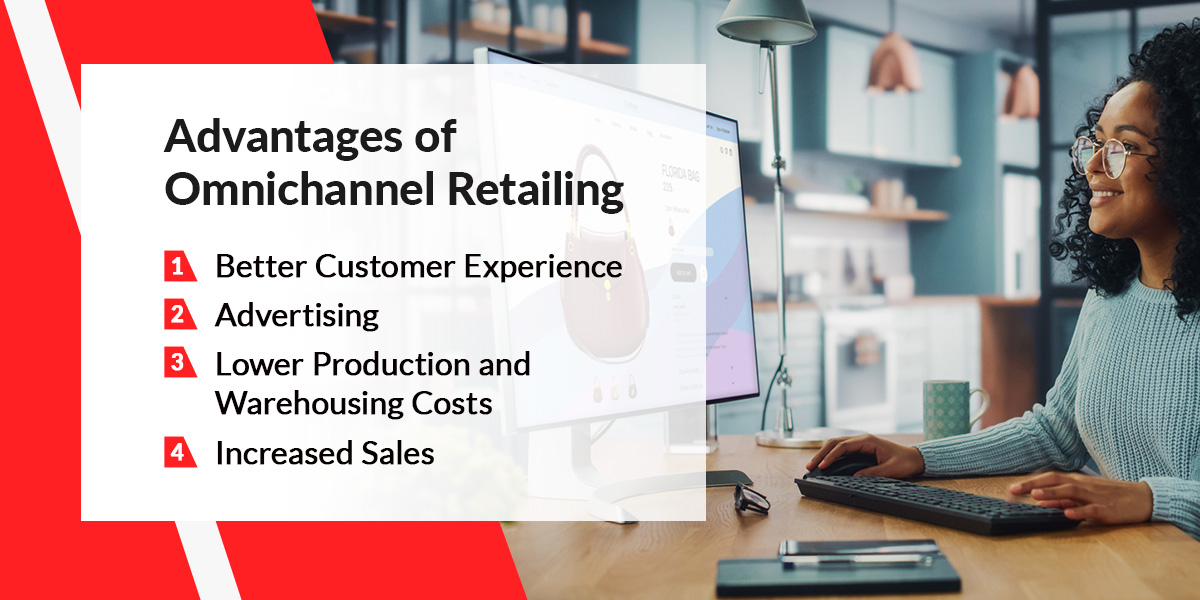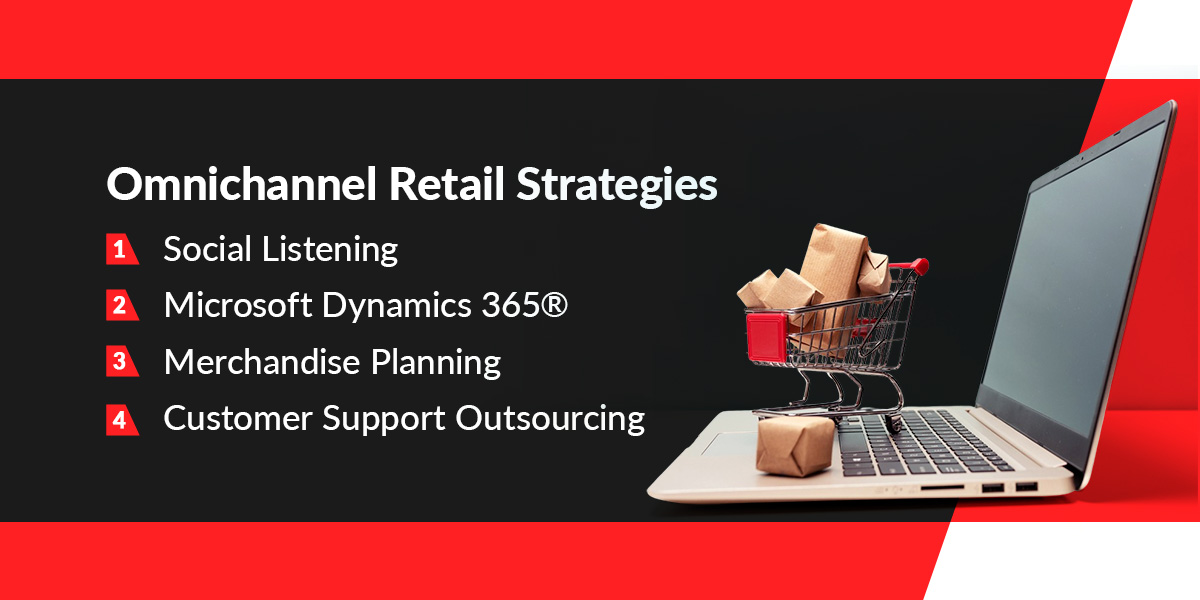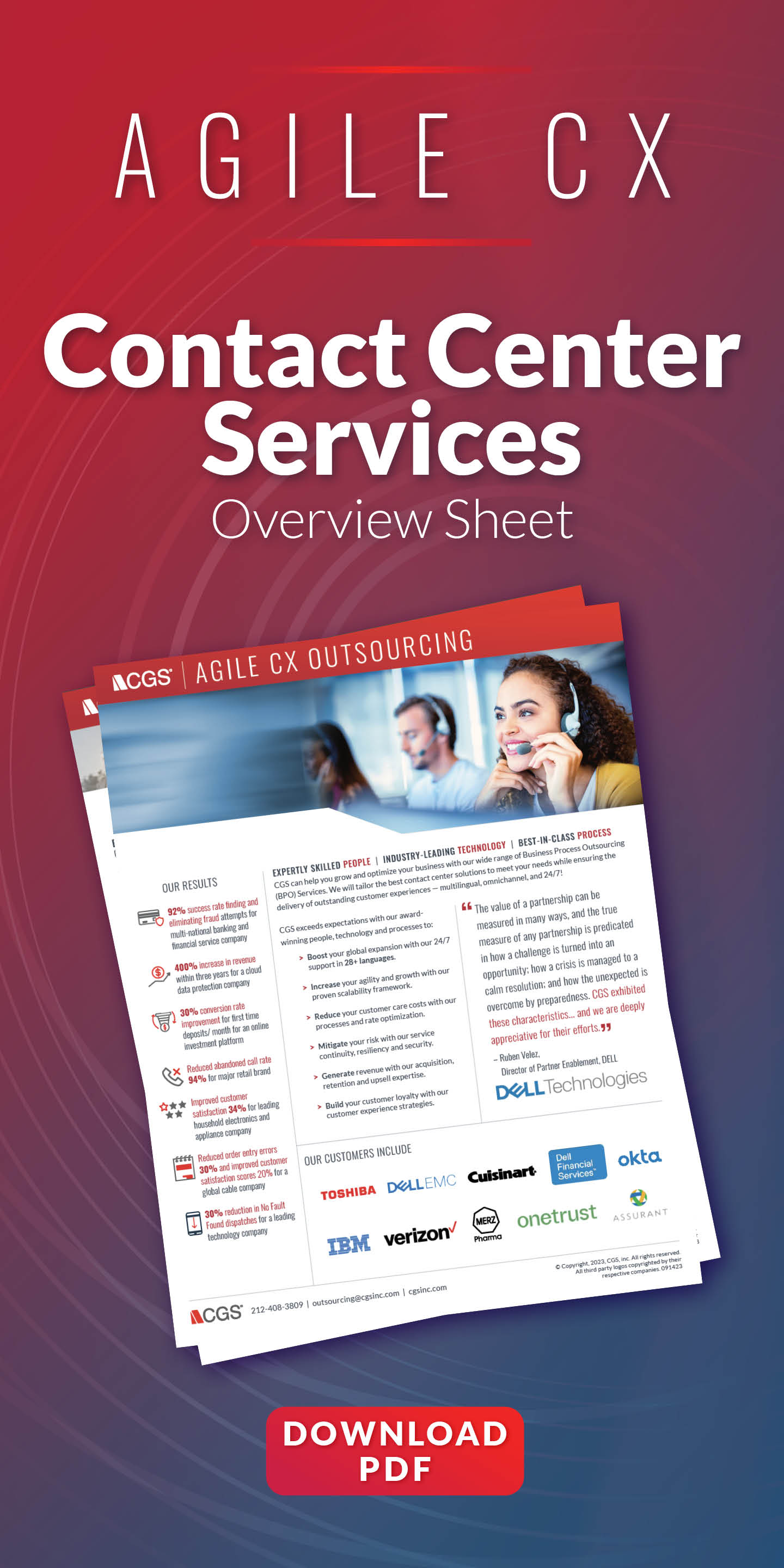Topics
What Is Omnichannel Retail and What Are the Benefits?

If you've ever found a shoe you liked, only to find the store is missing your size, you might recognize going through a process such as this:
- The sales associate double-checks the back room, then contacts a nearby store — probably by phone — to verify its availability elsewhere.
- You wait as the situation is explained to the sales associate at the other store.
Then, one of two things can happen:
- The other store carries your size, and you have to drive there to complete your purchase.
- The store offers to order another shoe, but you'll have to travel to the store again at an unspecified date to complete the purchase.
The process is needlessly tedious and can, at worst case, dissuade the consumer from purchasing at all. Omnichannel promises to streamline this entire process.
What Is Omnichannel Retailing?
Omnichannel describes a business model that unifies a company's data and processes. Each process has total visibility to the other processes. In other words, it relies on an end-to-end solution.
So, what does this actually look like? Real-world omnichannel implementations include, but are not limited to:
- Providing communication systems between consumer touchpoints
- Enabling inventory visibility between channel-specific warehouses
- Developing processes to unify data between internal departments
In short, omnichannel businesses centralize their data from concept to consumer. As a result, the customer of an omnichannel business can buy from anywhere. Similarly, their order can be shipped from anywhere.
In practice, a retail location in an omnichannel business would be capable of fulfilling online store orders. Another business could use omnichannel practices to leverage consumer and point-of-sale (POS) data to improve demand sensing, thus minimizing spoilage and warehouse costs.
Omnichannel vs. Multichannel
Both omnichannel and multichannel businesses permit the consumer to purchase from separate channels. However, multichannel businesses manage each channel with disparate systems. As a result, channels in a multichannel business cannot communicate with each other.
Conversely, omnichannel businesses enable free communication between channels. Each channel can view the inventory levels of another.

Advantages of Omnichannel Retailing
Here are some benefits of omnichannel retailing for your consumers.
1. Better Customer Experience
Breaking down the walls between a business's channels empowers the customer to interact with a company in a way that feels natural to them. Successfully responding to consumer demand increases satisfaction.
2. Advertising
Advertising and digital marketing have become almost entirely data-driven. Therefore, a system that centralizes all business data can lower ad spending by offering historical data on order details.
3. Lower Production and Warehousing Costs
Data centralization within a company can produce accurate sales forecasts and demand sensing. This reduces wasted inventory and the expenses associated with overproduction, including the costs of warehousing items that do not sell.
4. Increased Sales
The omnichannel-enabled business can increase its sales in several ways. For instance, it can use data centralization to easily sell its product on new channels. Furthermore, it can use its inventory transparency between channels to fulfill orders that would normally be out of stock.
What Are the Challenges of Omnichannel Retail?
Omnichannel businesses depend on proper planning. Companies operating more channels and customer or consumer touchpoints, in turn, encounter more omnichannel use cases. This increases the required complexity of the system handling the business's omnichannel operations.
Since consumers have growing expectations for companies that offer their products on multiple channels, managing these channels properly requires careful and diligent planning. Omnichannel businesses must handle all possible use cases caused by the different channel interactions.
To illustrate the planning challenges required for omnichannel success, we'll go through the processes and variables associated with a single omnichannel use case.
Take the following case — a consumer buys an article of clothing at an apparel business's online store. Upon delivery, the item does not fit. The consumer is then presented with two options.
First, they could contact the online store and ship the item back. Second, they could visit a retail location of the company and ask for an instant return or an exchange. The omnichannel business in question must have procedures to account for all possible variables, even for this basic task. The company must:
- Ensure accurate stock levels across its online channel and brick-and-mortar store, requiring a connection between each.
- Determine from which channel to reimburse the consumer. If not from the online channel, the company must transfer funds and manage bookkeeping across channels.
- Account for the possibility that the item could have been shipped from a warehouse in a different country than the retail location where it is being returned to.
- Account for an in-store exchange and its implications for all of the above.
These are just a few complications a business may encounter when trying to offer an omnichannel experience. Businesses need a robust end-to-end system to handle the large number of use cases created when allowing for each of the possible consumer interactions within various channels.
By choosing the right end-to-end omnichannel software provider, a company can likely forgo most of the challenges issued when implementing omnichannel.

Omnichannel Retail Strategies
At Computer Generated Solutions (CGS), we provide various software solutions to assist you in your omnichannel efforts. With these technologies and resources, you can offer your customers a more efficient, simplified and user-friendly shopping experience. Here are some effective strategies to address your organization's omnichannel challenges.
1. Social Listening
Social listening can provide insight into what people are saying about your company and its competitors. Monitoring your customers' attitudes and engaging with them in real time can help them feel more valued and understood.
CGS offers various Business Process Outsourcing (BPO) services to help you optimize communication with your customers. CGS is the first contact center with social media monitoring abilities. We specialize in advanced listening tools to help you track and respond to customers. You can use this data to assess trends and make better business decisions.
2. Microsoft Dynamics 365®
As the number of shoppers increases in both brick-and-mortar and online stores, providing a seamless, consistent and personalized shopping experience for your customers is more critical than ever. Additionally, forecasting demands can be especially challenging in a bilingual, multi-currency omnichannel environment.
With Microsoft Dynamics 365, you can provide a flexible, scalable end-to-end software solution for your customer base. Dynamics 365 software can offer profound insight into customer behaviors, trends, costs and performance.
This cost-effective system is simple to integrate with existing software and channels. Discuss Dynamics 365 integration with CGS to enable a simpler, more unified shopping experience for your customers.
3. Merchandise Planning
Retailers, brands and manufacturers must:
- Deepen their understanding of consumer demand.
- Plan their inventory lineup based on this data.
- Improve collaboration with their channel partners.
With BlueCherry® Merchandise Planning, you can achieve greater efficiency and real-time business visibility. This fully integrated solution includes an extensive set of tools to help manage your:
- Brand.
- Demand forecasting.
- Inventory planning, balance and control.
When you take advantage of innovative omnichannel merchandise planning, you can determine the most appropriate and profitable strategies for your distribution channels based on customer preferences. Trending products can reach the market faster, leading to greater margins and full-price sell-throughs.
Meet your customers' demands and enhance your strategic decision-making with BlueCherry Merchandise Planning. Talk to CGS to determine if this is the right option for meeting your omnichannel challenges.
4. Customer Support Outsourcing
As an award-winning customer support outsourcing company, CGS can help meet your customers' needs quickly, boost sales and build long-term brand loyalty. Our knowledgeable customer support team receives in-depth training on your brand and products. They will learn your customer support goals and become an extension of your organization.
We can customize a contact center solution to provide excellent service for your customers and meet your omnichannel needs. Here are some of the features you can leverage:
- Twenty-four-seven support in over 28 languages.
- Reduced customer care costs with our rate optimization.
- Experienced contact center agents.
- Shorter call lengths and wait times.
- Automated routine customer inquiries.
Our multilingual agents can provide service through any of your consumers' preferred channels. Your customers receive efficient service regardless of where they are.
We also offer Teamwork AR™, an augmented reality-based platform enabling customers to guide agents remotely via their smartphone or tablet. Customers can show what the issue is and receive interactive assistance.
We also review key points from each interaction to continue improving our quality of support. Our team handles your customers' needs, whether simple or complex.
Omnichannel Retail Trends
Keeping up with the latest trends can help you improve your omnichannel strategies. Here are some current omnichannel trends to be aware of.
1. Buy Online, Pick Up In-Store (BOPIS)
BOPIS enables consumers to reap the benefits of both online and in-person shopping. They can browse items and place orders online, then pick up their products in-store. The COVID-19 pandemic in 2020 spurred the BOPIS trend to minimize contact.
While pandemic restrictions are a thing of the past, the curbside pickup trend doesn't appear to be going anywhere. It especially drives results in the young adult sector. In 2022, about two-thirds of millennial customers in the United States opted for curbside pickup after making online purchases. Moreover, 85% of shoppers picking up an online order make an additional in-store purchase.
2. Buy Online, Return In-Store (BORIS)
Besides ordering online and picking up items in person, consumers also desire the ability to return products in-store. To respond to this demand and give customers a more seamless shopping experience, many retailers are incorporating BORIS. Shoppers can return their online purchases in person by showing their emailed purchase confirmation.
Almost half of retailers report that BORIS increased in 2022, and it's not hard to see why. Customers can skip the hassle of printing a shipping label, packaging up the item and bringing it to the post office. They may also be more likely to buy an item online if they can return it in-store.
3. Appointment-Based Shopping
Appointment shopping lets customers book timeslots for a semi- or fully private shopping experience. They can browse at their leisure in a relaxed environment. Before 2020, appointment-based shopping was more prevalent in luxury, upscale brands. The pandemic brought an influx of shopping appointments to keep with social distancing guidelines.
In 2023, appointment shopping remains a trend that appears to stay. Customers can enjoy the in-store shopping experience with more privacy and personalization. Retailers can also connect more closely with shoppers, building relationships that extend into the digital realm.
4. Showrooms
As customers crave more in-person shopping experiences, showrooming is another growing trend in 2023. Showrooming allows customers to try on clothing, test products, speak with associates and experience the brand more hands-on. After gathering some useful insights, they may make an in-store purchase or return home to browse online.
Showrooming is an excellent opportunity to connect with your audience and gauge what they're looking for. It can offer ideas for improving various aspects of your in-store experience, including merchandising, customer service and checkout.
5. Social Selling
Nowadays, every retail brand needs a strong social media presence. It enables shoppers to learn about your products and brand. Social media platforms have also added the capability of making in-app purchases.
Video content is a popular medium in social media selling, as it significantly influences purchasing decisions. About 85% of consumers find videos essential when shopping online. Additionally, 48% report that videos boost confidence in their buying decisions.
Contact CGS for Omnichannel Retail Solutions
CGS offers a wealth of tools and technologies to improve your customers' shopping experience. We would love to discuss your needs and work with you to develop a customized solution. Learn more about how we can help you implement an omnichannel retail strategy by contacting us today!



